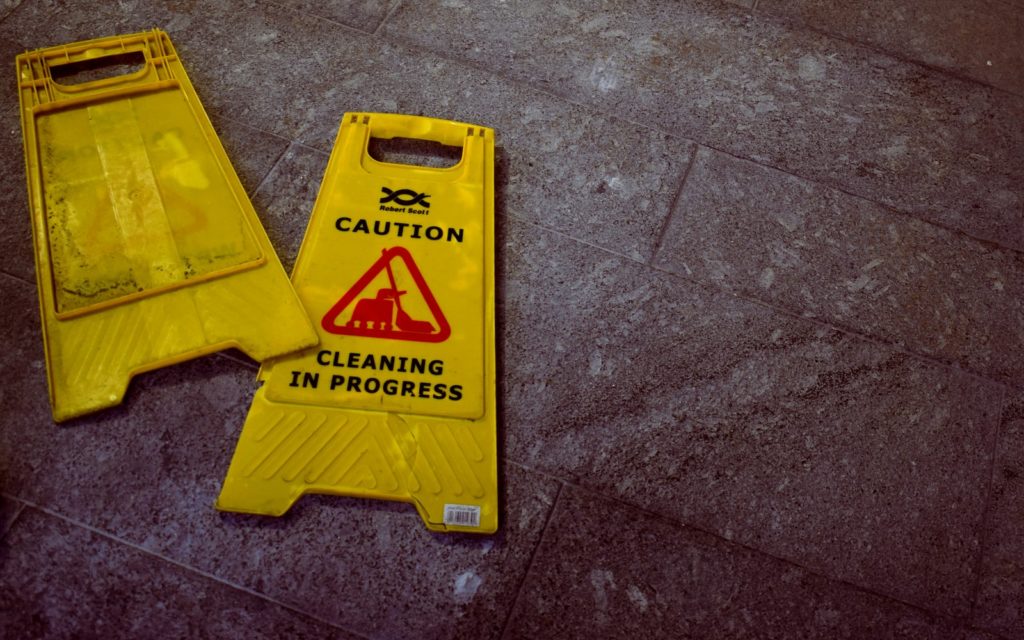A CHRISTMAS MESSAGE FROM THE LAW HEALTH & SAFETY TEAM
As the festive season is almost upon us once again, the health and safety team here at Law At Work would like to take this opportunity to thank all our clients for the continued custom and support. With our warmest wishes we hope you all have a fantastic Christmas and a happy and prosperous New Year. Stay safe over the festive season, have fun and we look forward to working with you all again in 2023.
Health & safety should not be a subject where you just find fault, apportion blame, and try to stop work, it should be a role where a sensible approach is applied, making sure work can be completed safely first time, every time.
Law At Work’s Health & Safety Team has since 2004 provided effective, commercially sound advice, practical on-site assistance, and training services to help our clients throughout the Channel Islands improve their overall business efficiency through effective health and safety performance, encouraging best practice. We work hard to make sure that we are considered as part of our client’s teams and take pride in being able to use local knowledge of Channel Islands industries and legislation, to be an essential element in helping our clients achieve their health & safety goals & objectives.
Our mission is to provide competent health & safety advice to our clients. The right advice, with integrity, collaboration, and simplicity!
As an approved training provider, we deliver a wide range of training including IOSH & CPD accredited training courses, and inhouse H&S courses.
Health & Safety Services
Our scope of services is wide, covering general health and safety management aligned to the globally recognised Plan, Do, Check, Act (PDCA) cycle, which includes:
Planning:
Providing or preparing H&S policies appropriate to our client’s business requirements and systems analysis to identify any gaps. Defining and communicating acceptable performance and resources needed.
Doing:
Helping our clients with risk assessments, occupational health, and training, from bespoke to nationally recognised courses. Effective H&S management by identifying & assessing risks, control measures, ensuring knowledge is recorded and shared.
Checking:
Conducting site and premises inspections, audits, accident investigations, fire risk assessments, access audits. Encouraging measurement of H&S performance.
Acting:
Management reports and action plans, sharing lessons learned.
For a more detailed look at our full range of training and services (including our HR, Care, and new Quality Management assessment service) just go to our website here or give us a call.
Here are some frequently asked Health & Safety Inspectorate (HSI) questions
Are construction workers obliged by law to wear head protection whilst working on-site?
Regulation 4 of The Health & Safety at Work (Construction) (Personal Protective Equipment) (Jersey) Regulations 2002 states:
(1) ‘every employer shall provide employees with suitable head protection and shall maintain it and replace it whenever necessary’ and every self-employed person shall provide himself or herself with suitable head protection and shall maintain it and replace it whenever necessary.
(2) every employer shall ensure as far as is reasonably practicable that each of his or her employees wears suitable head protection unless there is no foreseeable risk of injury to the employee’s head other than by falling.
The person in charge of a construction site is under regulation (5) (2), permitted to make the rules regulating the wearing of suitable head protection on that site, provided these rules are in writing and have been brought to the attention of all workers affected by them.
HSI and smoke-free legislation
HSI is not responsible for enforcing smoke-free legislation, however, HSI inspectors will bring matters of concern to the attention of the employer, particularly if it involves a number of smokers or if there is a failure to display warning notices. If the employer resists acting on this advice, the inspector will then bring the matter to the attention of the appropriate authority.
Any complaints received by HSI about the smoking ban will be referred to the appropriate authority. In premises permitted exemptions under the smoke-free law, health and safety legislation will continue to require employers to reduce the risk to the health and safety of their employees from second-hand smoking to as low a level as is reasonably practicable, and to encourage employers to adopt smoking policies in the workplace which give precedence to the wishes of non-smokers not to be exposed to second-hand smoking.
Even though smoke-free legislation is in place, HSI’s advice on protecting employees from the effects of second-hand smoke remains unchanged in that:
- Employers should have a specific policy on smoking in the workplace, which should give priority to the needs of non-smokers who do not wish to breathe tobacco smoke
- Employers should consult their employees and their representatives on the appropriate smoking policy to suit their workplace.
What is ‘Working at Height’?
Work at height means work in any place where, if precautions were not taken, a person could fall a distance liable to cause personal injury. You are working at height if you:
- Work above ground/floor level.
- Could fall from an edge, through an opening or fragile surface.
- Could fall from ground level into an opening in a floor or a hole in the ground. Work at height does not include a slip or a trip on the level, as a fall from height has to involve a fall from one level to a lower level, nor does it include walking up and down a permanent staircase in a building.
How do you decide if someone is ‘competent’ to work at height?
You should make sure that people with sufficient skills, knowledge and experience are employed to perform the task, or, if they are being trained, that they work under the supervision of somebody competent to do it.
In the case of low-risk, short duration tasks involving ladders, competence requirements may be no more than making sure employees receive instruction on how to use the equipment safely (e.g., how to tie a ladder properly) and appropriate training. Training often takes place on the job; it does not always take place in a classroom.
When a more technical level of competence is required, for example drawing up a plan for assembling a complex scaffold, existing training and certification schemes drawn up by trade associations and industry is one way to help demonstrate competence.
When is a ladder right for the job?
The law says that ladders can be used for work at height when a risk assessment has shown that using equipment offering a higher level of fall protection is not justified because of the low risk and short duration of use; or there are existing workplace features which cannot be altered.
Short duration is not the deciding factor in establishing whether an activity is acceptable or not – you should have first considered the risk. As a guide, if your task would require staying up a leaning ladder or stepladder for more than 30 minutes at a time, it is recommended that you consider alternative equipment. You should only use ladders in situations where they can be used safely, e.g., where the ladder will be level and stable, and where its reasonably practicable to do so, the ladder can be secured.
What is the minimum/maximum temperature in the workplace?
There are no specific references to minimum and maximum temperatures in Channel Islands health & safety legislation but as a general guide, the minimum should be 16°C (13°C
if the work involves physical activity).
It should be reasonably comfortable throughout the workplace and employees should not be exposed to uncomfortable conditions for long periods of time.
A meaningful maximum figure cannot be given due to the high temperatures found in some
industries (e.g., glass works or foundries). It is still possible to work safely in these environments provided appropriate controls are put in place.
The Workplace (Health, Safety and Welfare) Regulations 1992 lay down particular requirements for most aspects of the working environment. Regulation 7 deals specifically with the temperature in indoor workplaces and states that:
‘During working hours, the temperature in all workplaces inside buildings shall be reasonable.’ However, the application of the regulation depends on the nature of the workplace, such as a bakery, a cold store, an office, a warehouse.
These Regulations only apply to employees – they do not apply to members of the public, for example, with regard temperature complaints from customers in a shopping centre or cinema.
How many first aiders do I need?
The findings of your first aid needs assessment will help you decide how many first aiders are required. There are no fixed rules on exact numbers, and you will need to consider all the relevant circumstances of your workplace.
What do I need to do to comply with Regulation 27, Health & Safety (Management in Construction) (Jersey) Regulations 2016, or Regulations 192, 247 & 248 Guernsey Construction (Design & Management) 2020?
The Regulations apply to all work at height, where there is risk of a fall liable to cause personal injury. They place duties on employers, and those who control any work at height activity (such as facilities managers or building owners who may contract others to work at height).
As part of the Regulations, you must ensure:
- All work at height is carefully planned and organised.
- Those involved in work at height are competent.
- The risks from work at height are assessed, and appropriate work equipment is selected and used.
- The risks of working on or near fragile surfaces are effectively managed.
- The equipment used for work at height is thoroughly inspected and maintained.
The HSE and HSI websites are kindly acknowledged as primary sources of information




